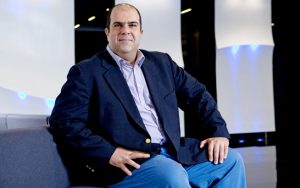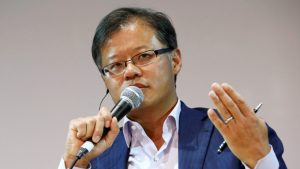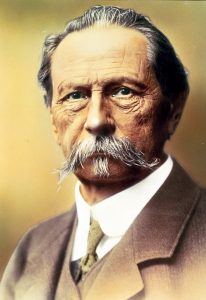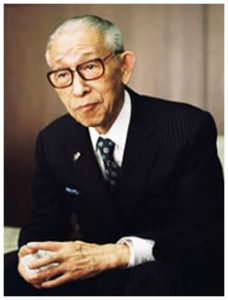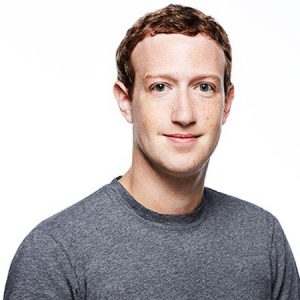Walt Disney : The Pioneer of American Animation Industry
Disney, a name that can bring a nostalgia among the adults and happiness among the children. The Showman, animator, voice actor as well as the film producer, was the pioneer of the animation industry and cartoon films. The man was a dreamer himself and introduced the world with his the imaginative world, through his cartoons. The creator of the Disneyland did not have an easy path paved for him and had to face difficulties to reach the place where he stands now.
Early Life
Walt Disney was born on 5 December 1901, as Walter Elias Disney, to Elias Disney? and Flora. He had three brothers Herbert, Raymond, Roy and a younger sister Ruth Disney. He was born in Chicago, but his family moved to Marceline, Missouri, in 1906, to do farming. In Marceline, Walt Disney joined the Park School, along with his sister, in late 1909. At the same time, he developed an interest in drawing. He tried copying the front-page cartoons of Ryan Walker in the ‘Appeal to Reason’ newspaper. His interest grew more when he got paid for painting a horse for his neighbour, a retired doctor.
Later, Disney’s family moved to Kansas City, Missouri, in 1911, where his father started a delivery route for ‘The Kansas City Star’ and ‘Kansas City Times’ newspapers. At the time’ Disney joined the Benton Grammar School’ and also helped his father with his work of selling newspapers. Disney also enrolled in a correspondence course in cartooning from Kansas City Art Institute. Meanwhile, he also became familiar with theatre and the world of vaudeville and motion pictures, through one of his classmates, Walter Pfeiffer.
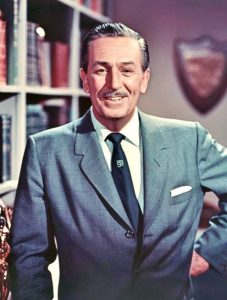
In 1917, Walter’s father brought their family back to the city, as he became a shareholder of a Chicago jelly producer, the O-Zell Company. In the city, Walter joined the McKinley High School. He also joined the night classes at the Chicago Academy of Fine Arts. The first world war was on, and the young Walter wanted to join the army. But, being an under-age, he was not selected. As a result, he forged his age in the certificates to join the Red Cross as the Ambulance Driver. The army posted him in France. There, he met the future founder of McDonald’s, Ray Kroc who was also working as an ambulance driver at that time. Walter never left drawing, in fact, he drew cartoons for the Army newspaper, and also, painted the ambulance with cartoons. After the world war was over, he came back to the US, in October 1919, and joined the Pesmen-Rubin Commercial Art Studio, as the apprentice artist.
Early Career
Within one year of Walter’s joining at the Pesmen-Rubin Commercial Art Studio, he had to leave the company, as it was going low at business. In 1920, along with Ub Iwerks, a colleague, from Pesmen-Rubin, he started his own company named as Iwerks-Disney. But, the company failed to accomplish its goals, and both the partners put it on hold, to join Kansas City Film Ad Company, that worked on the cutout animation technique. By the time, Walter found that the cel animation was more promising than the cutout method, and tried to convince his boss A. V. Cauger, to adopt this method of animation. But, failed to do so. He knew the potential of this technique, hence he borrowed a camera and a book, to experiment on the same. He started producing cartoons for a local Newman Theater, in the name of Newman’s Laugh-O-Grams. His cartoons became a huge success and he, along with with a co-worker, from the Film Ad Co, Fred Harman, founded the Laugh-O-Gram Studio, in 1921. He then hired his friend Iwerks, Rudolf Ising and Fred Harman’s brother Hugh.
Under the name of Laugh-O-Gram Studio, he produced Alice’s Wonderland?, taking Virginia Davis in the title role. But, before the completion of the film, his company was already shut due to lack of funds.
Founding Walt Disney Company?
Walter’s failure in business never stopped him from trying. In July 1923, he moved to Hollywood, to his brother Roy, and started looking for a buyer for his 12-minute short film Alice’s Wonderland?. At the same time, Margaret J. Winkler, a film distributor, was also facing struggles with the rights on both her cartoon series’ the ‘Out of the Inkwell’ and ‘Felix the Cat’. Walter needed a buyer and Winkler wanted a new series. So, both of them signed a contract for the Alice’s Wonderland. This contract led to the opening of Disney Brothers Studio?, that became The Walt Disney Company? in future. For the production purpose, Walter persuaded Iwerks and Virginia Davis, along with her family, to move to Hollywood. He also signed a $100 a month contract with Davis.
The Alice series ran successfully, for six long years, and but in those six years, Walter became bored of it. By the time, Winkler’s husband Charles Mintz had taken over Winkler’s work and became more involved in the production. At the end of the year 1927, Disney and Iwerks created Oswald the Lucky Rabbit. He wanted the producers to pay more for the new series, but, Mintz was not in favour of that. It caused friction between the two, and Walter was left alone, again with his friend Iwerks, with no property rights to Oswald.
Oswald was already a success, so, Disney needed a potentially better character, which could beat Oswald’s character. In May 1928, Disney and Iwerks produced and tested the screening of the short cartoon film, Plane Crazy, featuring Micky Mouse, for the very first time. Although in the first and the second film of Micky Mouse, Disney could not get a distributor, soon, Walter signed a contract with Universal Pictures. In the next films, Walter also included sound and music. Soon, to increase the efficiency and benefits, he hired more lower-paid artists to draw key poses and tried to negotiate with the distributors, on the payments. But, this resulted in Iwerks to leave Disney and join Universal Pictures. This incident also made the other artists leave Walt Disney, as they thought that he cannot handle the company alone without Iwerks.
Disney was at loss, both financially and mentally. But, Columbia Pictures came to the rescue, and Walter signed a contract with the company. This partnership became a massive success, and he started filming the cartoons in colour. In 1932, Walter won his first Academy Award for Best Short Subject (Cartoon). He also received an Honorary Award for the creation of Mickey Mouse.
In 1934, Disney started his first biggest project, Snow White and the Seven Dwarfs. The production cost for the film was $1.5 million and was called a “Disney’s Folly” by the people, as it was an overbudget project and took four years to complete. But, as the movie released, it became the most successful motion picture of 1938 and was critically acclaimed. Due to the second world war, his next two cartoon films, Pinocchio and Fantasia, could not do well, leading his company into debts. Hence, in 1940, he made the company open for its first public stock offering.
During the second world war, Disney produced many cartoon films, based on the war and Training Films Unit. The war also gave birth to the character of Donald Duck. The films based on the war gained enough revenue for his company.
After 1950, Walter produced various successful live-action movies, including Cinderella (1950), Treasure Island (1950), The Story of Robin Hood and His Merrie Men (1952), and Peter Pan (1953), etc.
In July 1954, Disney started constructing a theme park, in Anaheim, 35 miles (56 km) south of the studio. Just in one year, Disneyland was opened in July 1955 and it had 20,000 visitors a day in the coming year.
Personal Life & Death
Disney married, Lillian Bounds, in July 1925. Lillian was also an ink artist, who started working with Disney in 1924. They had two daughters Diane and Sharon (adopted). Lillian Bounds was one of his motivating power, that kept him going.
Disney holds the record of winning the maximum number of Academy Awards by an individual, by winning 22 awards out of 59 nominations. He also earned the Golden Globe Special Achievement Awards and multiple Emmy awards, along with other honorary awards.
Walter was a chain smoker, that affected his lungs badly, resulting in a lung cancer. Even after receiving proper treatment, Walter died 10 days after his 65th birthday, in the St. Joseph Hospital, Burbank, California.

Yashica is a Software Engineer turned Content Writer, who loves to write on social causes and expertise in writing technical stuff. She loves to watch movies and explore new places. She believes that you need to live once before you die. So experimenting with her life and career choices, she is trying to live her life to the fullest.
